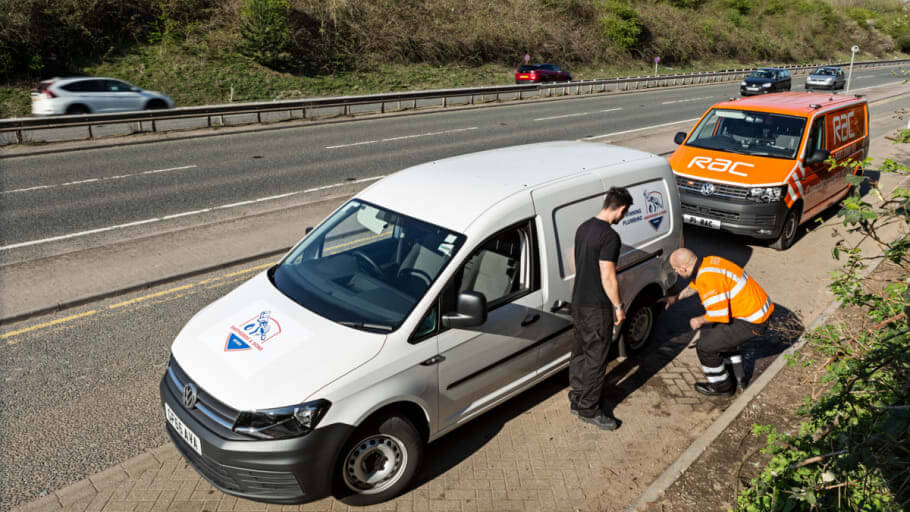A study into the rollout of red flashing warning lights on breakdown and recovery vehicles has concluded that there is no evidence from trials they result in any “discernible” change in driver behaviour.
It follows the Department for Transport’s (DfT) 30-point ‘plan for drivers’, which was published in October 2023, which recommended the use of red flashing lights to make recovery drivers more visible at the roadside.
At the time, the AA and RAC welcomed the announcement, but the new TRL (Transport Research Laboratory) report, commissioned by the DfT, says that surveys suggest red flashing lights seem to lead to only a slight increase in perceiving the meaning of ‘danger’ or ‘prepare to stop’, compared with amber.
Any decision to change regulations to allow the use of red flashing lights by road recovery industry vehicles, says the report, should be supported by extensive engagement with the industry to ensure that recovery operators are not led to expect direct safety benefits from this change alone.
The research suggests that there are several actions, all permitted within current regulations, the industry could take that have the potential to improve approaching drivers’ identification of vehicles in high-risk locations and so improve safety for their technicians and other road users.
This, it says, could be undertaken and developed as a co-operative ongoing action by the industry, creating and implementing an industry-wide vehicle safety improvement strategy.
It therefore recommends that the breakdown and recovery industry should “work together to develop an improvement strategy incorporating various actions to improve safety”.
This should include how any legally permitted technologies, colours and flash patterns should be used.
The strategy would identify: a common industry definition of ‘high-risk location’; a common ‘urgent’ flash rate for use in high-risk locations only; and a common, slower, lighting flash pattern to be used consistently in all other locations.
Development of systems capable of controlling and displaying appropriate flash patterns and lighting intensity, complying with regulations and aligning with research findings, is likely to entail working with lighting system designers and suppliers, it says.
With these lighting patterns confirmed, the industry should then ensure that all technicians are aware of the purpose of these flash rates and patterns and the safety benefits from maintaining a clear differentiation in use between higher- and lower-risk locations.
A common theme from numerous submissions was that current amber beacons are heavily over-used, with this not limited to the road recovery industry.
An additional task for the industry could be to forge relationships with other authorised amber beacons users to encourage responsible and appropriate use of beacons.
Implementation of appropriate, risk-related, flash patterns may need to be accompanied by changes to conditions of membership of industry groups, it says, with provision of updates to guidance and training on beacon use, potentially with monitoring and reporting.
Recording incidents on shared database
Two other actions with potential long-term benefits being recommended are to review additional conspicuity equipment and recommend to the industry those which are proven beneficial, and to record, investigate and report, on a common database, all collisions involving industry vehicles and personnel.
This incident recording may inform improvements to working practices and development of targeted safety advice and equipment, the report says.
TRL’s second recommendation is that any change in the lighting or other technologies permitted should be supported by public education on the meanings of different conspicuity technologies.
This could include related elements within the Hazard Perception Test and Theory Test for new drivers, and changes to the Highway Code.
The project has identified several aspects where, should authorisation be granted for the road recovery industry to display rear-facing red flashing lamps, their more widespread use might “potentially have adverse effects on other road users and other industries authorised only to use amber warning lighting”.
Some of these potential disbenefits, it explains, could arise from increased glare (if the total amount of light output increases, i.e. red being added to current amber) that could reduce drivers’ ability to identify pedestrians in the area around the recovery vehicle.
Also, should red flashing lamps, or red and amber flashing lamps, be routinely displayed on vehicles on the hard shoulder, this could reduce drivers’ expectation of red light having the meaning that a live lane is obstructed by that vehicle.
A further potential disbenefit, suggests the report, could be for the safety of other users of other vehicles that amber warning lamps and undertake stops, or move slowly, in live lanes for their work activities. This could include vehicles used for traffic management and roads maintenance.
Therefore, TRL says that any change to permissions should consider the potential impacts on other users.
Finally, several contributing industry stakeholders expressed the view that the Health and Safety Executive (HSE) should be considered a key stakeholder and involved with consultation regarding any decision on authorisation of red flashing lamp use by the industry.





















Login to comment
Comments
No comments have been made yet.